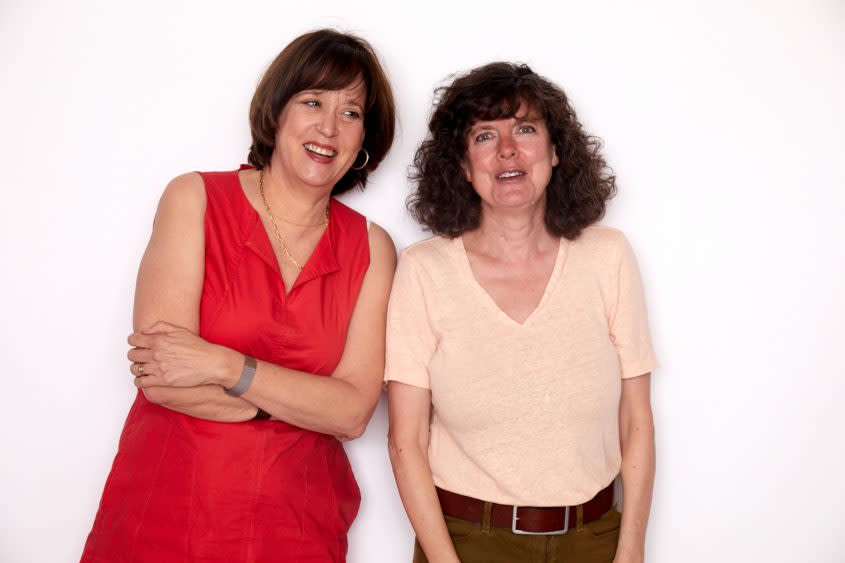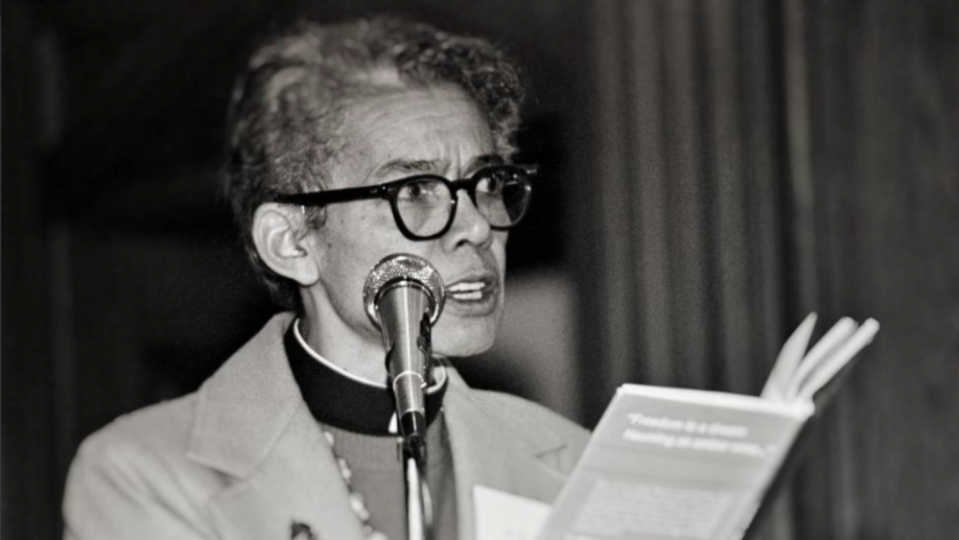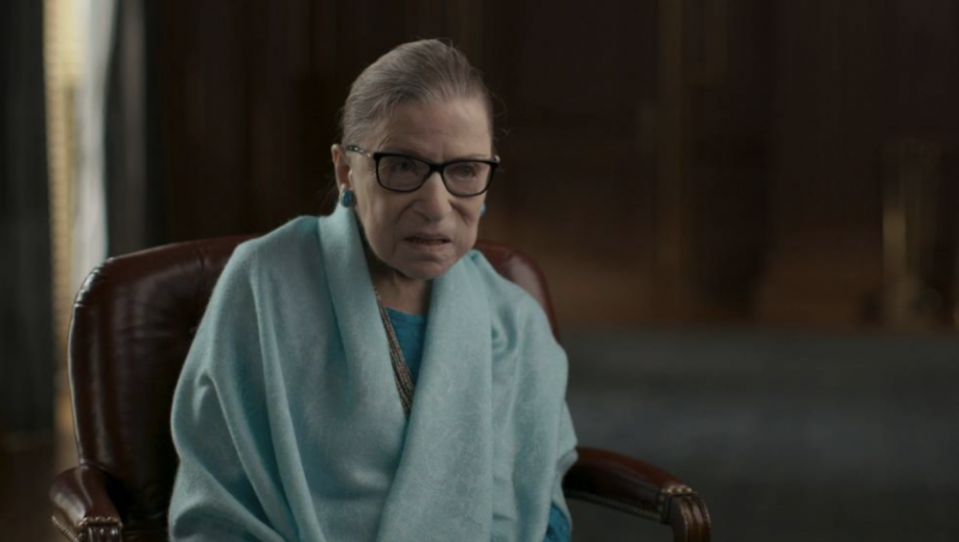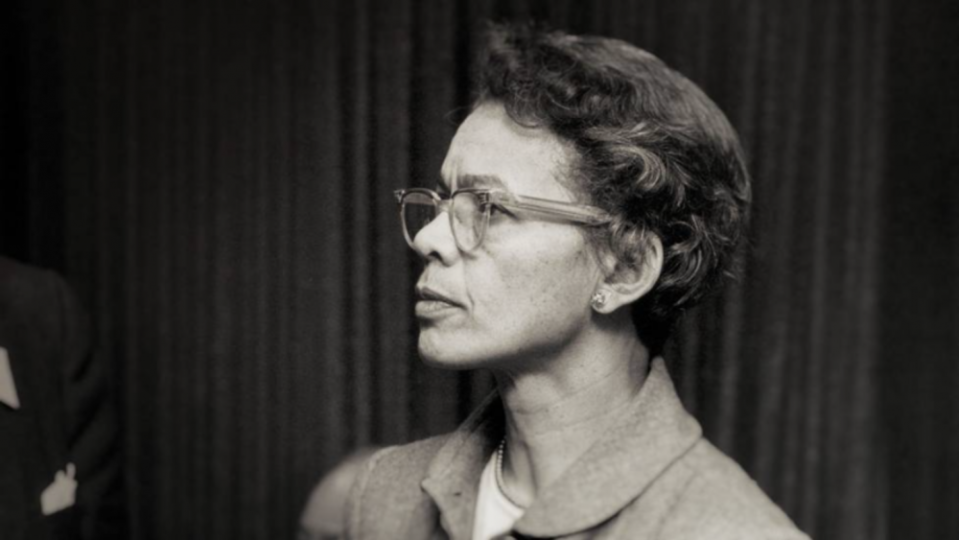‘RBG’ Filmmakers Introduce Viewers To Historic Activist, Lawyer, Thinker In ‘My Name Is Pauli Murray’
- Oops!Something went wrong.Please try again later.
- Oops!Something went wrong.Please try again later.
- Oops!Something went wrong.Please try again later.

Why did I not know about Pauli Murray?
That is the overwhelming response of viewers to the new documentary My Name Is Pauli Murray, directed by the Emmy-winning and Oscar-nominated team behind RBG, Julie Cohen and Betsy West.
More from Deadline
US Open Tennis: UK's Channel 4 Strikes Deal With Amazon To Show Final Live
"He Uses Art As A Way Of Surviving": 'Val' Offers Intimate, Autobiographical Portrait Of Val Kilmer
As West put it in a tweet Friday, “Some people are furious, some dumbfounded that they weren’t taught about #PauliMurray.”
The documentary, now streaming on Amazon Prime, corrects a historical injustice by introducing audiences to a “Black, queer, gender-nonconforming” person who broke barriers at every stage of their life. As a law student, Murray’s innovative thinking laid the conceptual framework for overturning Plessy v. Ferguson, the 1896 Supreme Court decision that had validated the notion of “separate but equal” accommodations for Blacks and whites.

Chris Chapman/Deadline
“During most of Pauli’s lifetime it was fairly difficult and radical to be fighting for racial equality,” Cohen tells Deadline. “It was fairly difficult and radical to be fighting for gender equality and Pauli was talking about not only those two individual things but actually was talking a lot about the confluence of both, about how being discriminated against as a Black person and as a woman just compounded things.”
Murray (1910-1985) was raised in the Jim Crow South of Durham, North Carolina, in a family of African-American, Native American, and European heritage. As people of light complexion they were not well accepted by the Black community, but the white community spurned them as it did all people of color. Murray displayed precocious intellectual gifts, and an early penchant for rejecting orthodoxy by preferring to wear pants instead of dresses.
In 1940—15 years before Rosa Parks’ courageous act in Montgomery, Alabama—Murray and a friend refused to move to the back of an interstate bus as it crossed into Virginia. They were arrested but framed their defense as a challenge to the legality of segregation in transportation.

Amazon Prime
“I think each thing Pauli pushed for Pauli was expecting change to happen,” notes producer and co-writer Talleah Bridges McMahon. “Pauli had this idea of, ‘If I can just reasonably explain to you the errors in your thinking and give you a new way to think about it, that you will of course be on board with this.’”
Through legal maneuvering by a judge and the prosecution, the bus incident did not become the defining moment that Rosa Parks’ protest would be. But it wasn’t the only instance where Murray was way ahead of the times. In 1943—17 years before the Woolworth counter sit-in–Pauli and fellow students at Howard University in Washington DC, staged a sit-in of their own at a cafeteria that served whites only. They succeeded in integrating an entire area near the Howard campus.
It was at Howard Law School that Murray wrote a paper articulating a new strategy to overturn Plessy v. Ferguson—not, as others had done, to say that accommodations for African-Americans were not maintained at an equal level of accommodations for whites, but to argue that “separate but equal” inherently violated the 14th Amendment. Segregation itself, Murray reasoned, sent a harmful message to African-Americans that they were inferior.
“Other people had been beaten down by the idea of separate but equal. ‘Okay, that’s what we have to deal with here,’” West observes. “Pauli’s like, ‘No, no, no, no, no. There is no equal when you’re separate.’ It is an optimistic point of view about challenging something that had been accepted for decades because of a decision in the 19th century.”
When Pauli outlined her position, “My classmates laughed at me,” Murray recalls in the film. But her thinking deeply influenced Thurgood Marshall, Spottswood Robinson and other members of the NAACP Legal Defense Fund as they brought suit in Brown v. Board of Education, the 1954 Supreme Court decision that would finally dismantle segregation in public schools.

“Pauli just happened to see that several years before some of the greatest thinkers of the time saw it,” Cohen says. “It was an extraordinarily deeply thought out idea and it just ended up that Pauli was a hundred percent correct, not [only] that this is morally correct but actually it’s potentially a winning strategy, like there’s a legal argument to be made here.”
At Howard, Murray encountered sexism on a regular basis. Unlike many in the Civil Rights Movement, she was simultaneously concerned with rights for African-Americans and women, and she saw discrimination against both groups as resulting from the same moral failing.
“She came up with the great term ‘Jane Crow’ to describe it,” Cohen notes. “And in a number of papers but also interviews was often bringing up what by today’s activists might be called the issue of intersectionality. This was an idea that was very much in Pauli’s thinking because of Pauli’s lived experience.”
Murray argued the 14th Amendment could also be used to attack gender-based discrimination.
“Courts have not yet fully realized that women’s rights are part of human rights,” Murray wrote in an essay titled Jane Crow and the Law, co-authored by Mary Eastwood. “But the climate appears favorable to renewed judicial attacks on sex discrimination.”
In 1965, years before Ruth Bader Ginsburg would argue her first Supreme Court case on gender discrimination, Murray crafted the legal arguments that led a U.S. District Court in Alabama to rule that women must be allowed to serve on juries.
“After so many losses and so many failures in a lifetime,” Murray says in the documentary, “this was my sweetest victory.”

Amazon Prime
Ginsburg and Murray became friends and RBG credited Pauli’s work as she argued sex discrimination cases before the Supreme Court that she would later join as an Associate Justice. In fact, it was Ruth Bader Ginsburg who first told the directors about Murray.
“Then after RGB [told us] we started looking into Pauli,” West says, “and were absolutely blown away by all of the areas of our life that Pauli influenced–civil rights, activism, labor rights, feminist legal theory…[We thought], ‘Ohmygoodness, what a life and why didn’t we know about this person?’”
Murray lived as a non-binary person before there was such a term. Her struggles with her sexuality and gender identity—at a time of great ignorance in society about such things—contributed to depression that would cause her to be hospitalized on multiple occasions. She eventually found love with Irene “Renee” Barlow, the office manager at a law firm where Murray worked for a time.
Murray was also a deeply spiritual person and made a decision that shocked RBG and other friends to leave the law and study to become an Episcopal priest.

“In the end Pauli sees the limitation to the law,” Bridges McMahon comments. “And so that’s why you see this turn toward spirituality that ultimately is like, ‘Actually, we need to get at the souls of people. Until we actually get everyone invested in this common idea, we’re never going to achieve anything.’”
In the last years of her life, Murray worked on a memoir as she battled pancreatic cancer. Songs In a Weary Throat was published posthumously in 1987. She saw herself above all as a writer. Among her many salient words were these: “One person plus one typewriter constitutes a movement.”
“I think that’s why it’s a good time to be digging back into the messages that Pauli was spreading throughout life about how we can advance things as well as the very act of reconsidering our history with Pauli Murray in it,” Cohen tells Deadline. “The whole question of who we revere, who’s contributions, particularly intellectual contributions, have advanced the country–I mean Pauli Murray’s just a fantastic example of someone who’s history hasn’t been explored enough and needs to be learned more.”
Best of Deadline
Emmy Predictions 2022: What Could Be Grabbing The Gold A Year From Now?
What's New On HBO Max For October 2021: Day-By-Day Listings For TV Shows & Movies
New On Netflix For October 2021: Day-By-Day Listings For TV Series, Movies & More
Sign up for Deadline's Newsletter. For the latest news, follow us on Facebook, Twitter, and Instagram.

